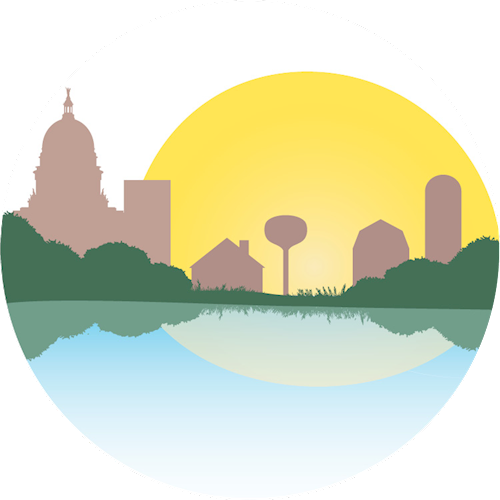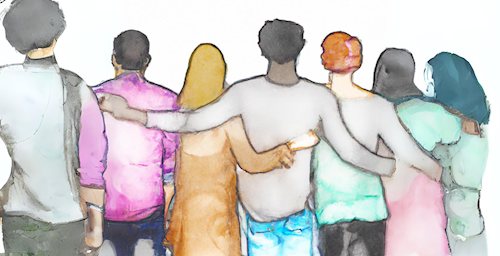

The Federal Government has set a goal that 40% of the overall benefits of certain Federal investments will flow to disadvantaged communities that were historically underserved and/or are disproportionately impacted by climate change. To meet this goal, many Federal program guidelines are being rewritten to ensure disadvantaged communities are positioned to receive at least 40% of available funding. This includes programs that are financed through grant funding, loans, direct spending, staffing, or through other avenues.
Programs that fall under Justice40 are from one of seven climate-related areas: climate change, clean energy and energy efficiency, clean transit, affordable and sustainable housing, training and workforce development, remediation and reduction of legacy pollution, and the development of critical clean water and wastewater infrastructure. All Justice40 programs are required to include stakeholder consultation to ensure communities are meaningfully involved in determining program benefits.
The Inflation Reduction Act and the Bipartisan Infrastructure Law are both included within the Justice40 Initiative. This means that 40% of the available grants and spending for each will be focused on underserved communities. And although tax credits are not direct spending equally available for individuals and organizations, additional rebates will be available to disadvantaged communities and low-income residents.

Below are seveal resources to help you assess whether your project might qualify as a disadvantaged community. Programs use differing criteria so check which tools are applicable for each application.
Bonus credits are available for renewable energy projects sited in brownfields or areas with a history of fossil energy production. The aim here is to encourage new development in those areas. Learn more about how to calculate your eligible tax credits and learn whether your organization or project is sited in an Energy Community.
The Energy Community Tax Credit Bonus applies a bonus of up to 10% (for renewable energy production tax credits) or 10 percentage points (for renewable energy investment tax credits) for projects, facilities, and technologies located in energy communities.
Energy produced from renewable sources is eligible for this credit- see list of eligible projects. Increased credit amounts or rates are available to taxpayers that satisfy certain energy community requirements under Section 45, 48, 45Y, or 48E of the Internal Revenue Code. The IRA defines energy communities as:
Learn more about bonus tax credits and how to identify those communities plus see Energy Community FAQs for more information.
Some credits, such as the EV charging infrastructure credits, are limited to low income or rural communities. To qualify, the equipment must be placed in a low-income community or a non-urban area.

The Inflation Reduction Act allocates some rebates and tax credits to residents and households based on income. For example, electric vehicle purchases and efficient appliance rebates are income-dependent.

Under the IRA the federal government created two new residential rebate programs to encourage energy efficiency and electrification. The new programs prioritize rebates for low and moderate income households, serving homeowners, landlords and tenants. In Wisconsin, Focus on Energy is implementing those programs on behalf of the state.
HOMES offers rebates for energy-saving home improvements, including insulation and efficient heating/cooling equipment. Participants need a home energy assessment to identify eligible upgrades. Rebate amounts are based on a household’s income level and predicted energy savings from recommended upgrades.
Applicants must use an IRA Registered Contractor to qualify for services.
HEAR will provide rebates to households installing heat pumps and other efficient electric equipment to help further electrify their homes. Additional qualified improvements include insulation, air sealing, and upgraded electrical panels and wiring. This program will be available to Wisconsin residents in single-family homes and multifamily buildings, earning 150% of Area Median Income (AMI) or less.
The IRA offers a Low-Income Communities Bonus Credits for certain wind and solar renewable energy projects. Each year there will be a window when the government accepts and reviews applications. Projects must apply and receive notice of successful bonus credit allocation before the project is put into service.
The Low-Income Communities Bonus Credit Program allocates 1.8 GW of capacity available through competitive application across four categories (low-income, Indian land, federally-subsidized housing, and facilities that benefit low-income households) of qualified solar or wind facilities with maximum output of less than five megawatts.
Once the government has allocated all of the credits for a year the application process will be closed until the next year. Because entities must secure an allocaton before their project is complete, we recommend organizations apply for this credit as soon as they are able. Under the guidelines entities have up to four years from the date of the notice of bonus credit allocation to put the project into service.
Reference the Applicant Checklist for how to apply for the Low-Income Communities Bonus Credit Program. See also the final IRS regulations and procedural guidelines.
Program Capacity Dashboard
A Program Capacity Dashboard is now available and identifies for users where project capacity remains for each cateogry for the year.
Through 2025, the IRS has opted to rollover any unclaimed allocations into the subsequent program year, when another base 1.8 gigawatts of capacity is available via application.
Eligibility
Only wind and solar renewable projects <5 MW are eligible for the competitive Low-Income Bonus Program, along with battery storage connected to those projects. Project that are +10% for projects installed in low-income communities or on Indian land are eligible for 10% project deduction; projects that are part of a qualified low-income residential building or qualified low-income economic benefit projects are eligible for a 20% deduction.
See selection criteria maps using the button on the left.

The IRA offers Low-Income Communities Bonus Credits for certain wind and solar renewable energy projects. The credit has an annual limit of 1.8 GW. Each year there will be a short window when the government accepts and reviews applications. Projects must apply and receive notice of successful bonus credit allocation before the project is put into service. Reference the Applicant Checklist for how to apply for the Low-Income Communities Bonus Credit Program. Organizations will need an account at Login.gov to complete an application.
Once the federal government has allocated all of the credits for a year the application process will be closed until the next year. Updates on remaining capacity by category can now be accessed through a new program capacity dashboard. Because entities must secure an allocaton before their project is complete, we recommend organizations apply for this credit as early in the project process as they are able. Under the guidelines entities have up to four years from the date of the notice of bonus credit allocation to put the project into service.
Eligibility
Only wind and solar renewable projects <5 MW are eligible to apply for the competitive Low-Income Bonus Program, along with battery storage connected to those projects. Project that are +10% for projects installed in low-income communities or on Indian land are eligible for 10% project deduction; projects that are part of a qualified low-income residential building or qualified low-income economic benefit projects are eligible for a 20% deduction.

Learn more about state and federal grant opportunities, many of which are focused on underserved communities.